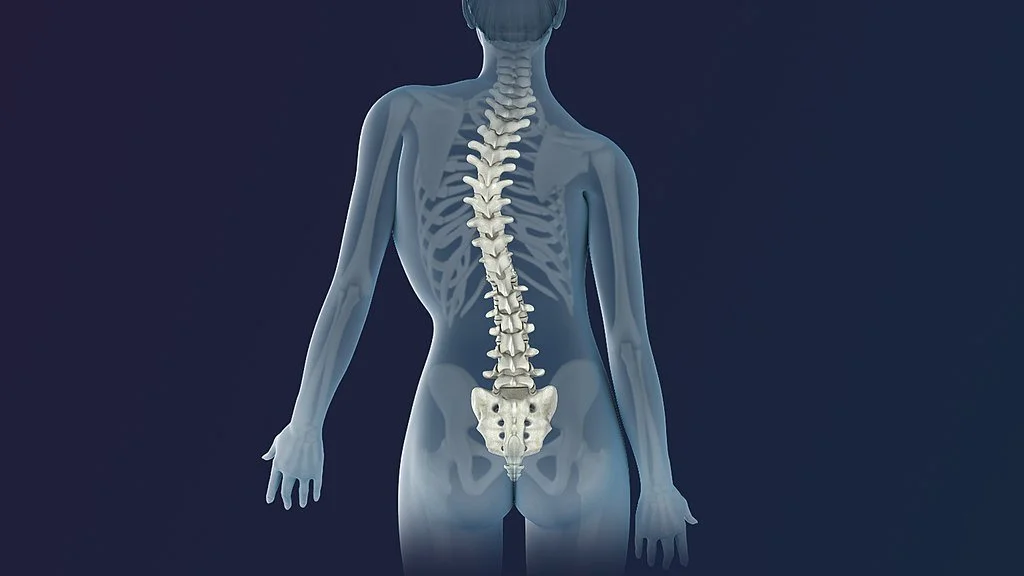How Scoliosis Changes Your Yoga Practice
/For many years scoliosis didn’t change my yoga practice. Or rather, I didn’t change my yoga practice because of my scoliosis. But as I have gotten older and my body has changed, I can’t ignore this condition anymore.
https://www.scientificanimations.com, CC BY-SA 4.0 <https://creativecommons.org/licenses/by-sa/4.0>, via Wikimedia Commons
Even though my scoliosis is mild, I now need to take my scoliosis into consideration in the classes I take and teach. It isn’t necessary to take specific yoga for scoliosis classes but this post will discuss the ways in which my practice has changed and the ways in which you can adapt your asana practice.
My practice has changed over the last decade. What might have started as functional discrepancies in my body have over time turned into structural changes. The body will adapt over time: bones can be repatterned and reshaped, muscles can become tight or atrophied, and your bone and muscle changes cause a rotation in the spine.
Bone shape
With scoliosis, the shapes of your bones are different from side to side. If you lay down on your mat feel your bottom ribs. One side is more likely to be pointier and one side is higher. Now noticing your shoulder blades, one side is again likely to be pointier and one will push into the mat more. The further back your bones, the more you will feel them press into the mat. The shapes of your bones will allow more or less space in certain areas of the body and therefore can compress your organs leading to various resulting conditions.
Muscles
Bones can have a significant impact on your posture and shape, but it is possible that you are less likely to notice those differences initially. Muscles have many nerve receptors and I noticed the differences in my muscles before my bones. I initially blamed stress or activities but over time scoliosis made significant muscular changes that I could feel. These include tightness, hypermobility, and weakness.
Muscles along your curves are the most likely to me impacted. On my convex side of my thoracic curve and the convex side on my compensatory cervical curves are the tightest. The muscles of my lumbar are all tight and the muscles around my hips are tighter on my longer leg side (the one with the higher hip).
The concave parts of our bodies become atrophied and the muscles on the convex side become overstretched and hypermobile. Both weak muscles and overstretched muscles are susceptible to strain and recurring pain.
Rotation
The shape of bones and the tightness of the muscles around the bones begins to rotate our bodies in the direction of convexities. The rotation of the spine from scoliosis makes it easier to do twists in one direction. Twisting too much can cause injury.
How my yoga practice has changed
My yoga practice is affected by how my bones and muscles are aligned. My alignment is particularly changed from my bone structure. In order to feel the differences from side to side and feel more balanced, I now use more props. It helps to do poses against the wall or reclined on the mat in order to feel where each side of your body is. I started to find that I thought I knew what my body was doing and where my body was in space but either age or asymmetries have started to manipulate this understanding. Props provide feedback that can help strengthen your body awareness, which will improve balance and coordination.
In order to address changes in bone structure, I use towels and props where there are concavities to make them more aligned. I also take more time getting into and out of poses. This allows me more time to shift and try to keep more evenness in my body while I move. I used to do faster-paced vinyasa yoga regularly but I find that when I am moving more quickly, I have less capacity to monitor where I am in space. There is a reason it is called flow—you can get entranced and swept up in the movement, which can be therapeutic—but most often I want to seek more alignment in order to promote pain reduction.
Muscle differences change how the stretches feel, range of motion, and how long I can stay in a pose. The side of your convexity will have more overstretched muscles. They can still be quite tight but in side/lateral bends don’t overstretch your convex side. Work on lengthening the concave side and strengthening the convex side, slowly trying to find a little more balance between sides.
The final change to my yoga practice and perhaps the most significant is having a better relationship with my ego. I have had expectations about what my body should be able to do and how I should look or feel. I was attached to the belief that yoga teachers needed to be able to do all poses. Though I am still driven to get better and search for some level of satisfaction within my body, I have been able to release myself from many self-induced expectations and mindsets that do not serve me. Yoga serves to teach us about ourselves and, from that, better accept and belove our true selves.



